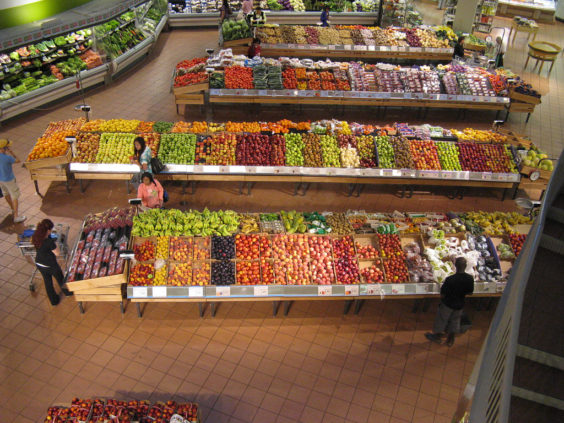You’ve heard the complaints from couponers and non-couponers alike – “there are never coupons for meat or produce” and “coupons are only for junk food.” Part of the reason is that there are few “brand names” in the fresh meat and produce sections, so there are few major manufacturers able to offer coupons. So surely grocery stores themselves could step up, and make more store coupons available for fresh items. Right?
Wrong.
A pair of San Francisco medical professionals decided to take a closer look at store coupons, to see whether they’re any better – or healthier – than manufacturer’s coupons. What they found, was a disappointment.
Dr. Hilary Seligman and Andrea Lopez are both affiliated with the University of California San Francisco Center for Vulnerable Populations at San Francisco General Hospital. They recently published the results of their research, in the medical journal Preventing Chronic Disease.
The study “did not include manufacturer coupons, because these are not offered for fruits and vegetables,” the report reads. Instead, the pair focused on more than a thousand store coupons from six major grocery chains, which were available online as either printable or digital offers over a four-week period last spring. Why online only? “There have been studies in the past that focused on print and circular coupons,” Dr. Seligman told Coupons in the News. “We chose to focus on online coupons because they are the ‘new thing’, they are being pushed by retailers, and we suspect that they will be increasingly important in terms of visibility and motivating consumer purchases.”
And what retailers are motivating consumers to purchase, is apparently not particularly good for us.
Their research found that 25% of the coupons available were for processed snack foods, candies, and desserts, representing the largest category. The next largest category was processed frozen/dried/chilled prepared meals, at 14%. Condiments/sauces/dressings came in third, representing 10% of all store coupons included in the study.
On the other, healthier, end of the spectrum, only 1% of the store coupons studied were for fresh vegetables. Another 1% were for unprocessed meats, and exactly zero of the 1,056 online store coupons studied were for fresh fruit.
It seems the critics of coupons may be correct.
In grocery stores’ defense, even many store coupons are funded by manufacturers, as a form of advertising. So the same argument applies, that since there are few consumer packaged goods companies offering fresh meat and produce, there are few companies available to fund store coupons for those products. And even though there may be few coupons available for healthy items, most weekly grocery circulars regularly offer sales and specials in the meat and produce departments. So it’s not as though all the healthy stuff is full price, and only the junk is cheap.
Then again, other studies have noted that even though they advertise healthy foods, grocery circulars still tend to disproportionately offer deals on processed foods over fresh foods. And other researchers have found evidence that coupons incentivize healthier grocery choices more so than mere price discounts.
The authors of this most recent study argue that it has much to do with perception. “Grocery retailers play a role in motivating our choices at the grocery store, and therefore the food we eat,” Dr. Seligman told Coupons in the News. “If we are serious about changing our food environment and motivating healthier eating choices, we need to engage grocery retailers the same way that we are engaging schools, fast food restaurants, food producers, and other groups who influence our food environment.”
But even the researchers acknowledge that it won’t be easy. “It is certainly much easier to offer coupons for shelf-stable, nonperishable foods,” Dr. Seligman said. “Our position is not that offering coupons for perishable food items will be easy, because it most certainly won’t be.” Instead, they suggest that grocery retailers could better recognize that they are “uniquely positioned to positively influence Americans’ dietary patterns.”
One other fact that the study notes – the USDA estimates that more than $15 billion worth of fresh produce goes unsold at supermarkets each year. “Retailers accept wastage of fresh produce as part of the cost of doing business,” the researchers write. Stores may not make as big a profit, by offering coupons for fresh foods. But, considering the alternative of just throwing it all away, offering healthier coupons may be a price they need to pay – otherwise, consumers may be the ones paying the price in the long run.

















Have you seen the new organic line that Kroger is carrying? I loaded a whole slew of coupons to my shopper card just last week….but that doesn’t mean the coupons will offset the (presumably) high prices being asked for these products.
But I’ll try! Again and again and again. 🙂